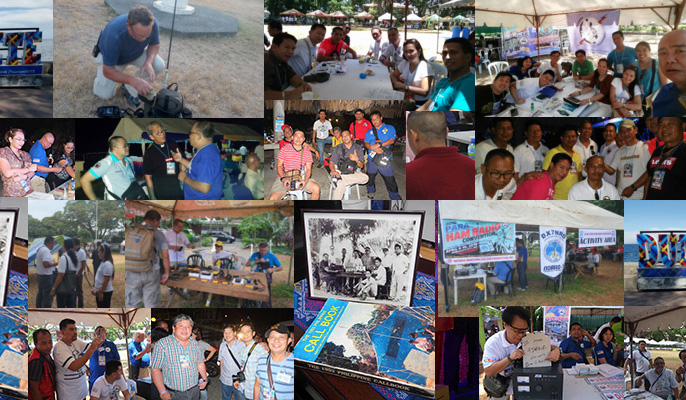
11/13/2013
[UPDATED 2013-11-14 1412 UTC] The International Telecommunication Union (ITU) announced this week that it has deployed satellite communication equipment to the Philippines to help re-establish “communications vital for search and rescue” in areas severely affected by Typhoon Haiyan (Yolanda). Amateur Radio volunteers throughout the Philippine archipelago have been a primary communication link since the storm struck November 8, and their efforts continue.
“ITU is prepared to help the government and people of the Philippines in every way possible in their hour of need, and to deal with the colossal tragedy that has overwhelmed the country with unimaginable loss of life and property,” ITU Secretary-General Dr Hamadoun I. Touré, HB9EHT, said.
Noting that it “could be weeks or months” before the telecommunication infrastructure is back in order, the ITU — a specialized UN agency — said it hoped the equipment would help in assessing the widespread damage and loss of life as well as “enable much-needed support for search-and-rescue services as well as the need for families to re-establish contacts.”
The gear included satellite telephones as well as network terminals and a CDMA base station. All of the equipment can be charged via automotive batteries, with solar panels as a back-up power source, the ITU said. The ITU also has sent communication experts to the Philippines to train first responders in the use of the equipment during search-and-rescue operations and for logistical support.
While humanitarian aid begins to flow into the Philippines, a network of ham radio emergency communicators continues to handle a large volume of vital message traffic. Ramon Anquilan, DU1UGZ, of the Philippine Amateur Radio Association (PARA), said its Ham Emergency Radio Operations (HERO) network is active in the disaster areas and sending messages on HF and VHF — 40 meters and 2 meters — elsewhere in the archipelago. He reports some of the pressure is off the ham radio community now that cellular telephone companies are starting to restore service in hard-hit Tacloban, the capital of Leyte province. The HERO station there has been handling health-and-welfare inquiries. Ironically a curfew imposed to maintain law and order has prevented the station from continuing its efforts after dark. Anquilan said the National Telecommunications Commission (NTC) has employed the HERO network to handle several messages.
“It appears that NTC had an emergency meeting and decided to provide hams in the area with mobile rigs and hand-held portables,” he said. “The NTC's awareness of the importance of Amateur Radio is maturing, and there are talks of our clubs training and maintaining stations NTC regional offices.” Anquilan said national and emergency response agencies have relocated the command post to the Tacloban Grandstand, while the HERO District 5 Radio Amateur Network (RADNET) station, using the call sign DU5AOK, remains on the second floor of city hall in Tacloban — with security, food, and logistics problems now cropping up.
“We are urgently requesting assistance to sustain the DU5AOK station and ensure operations in the other hard-struck areas are established — Samar, Panay, Cebu, Biliran, and the tourist area of Palawan,” he said. The local government has been maintaining the emergency generator powering the station. Anquilan specifically mentioned field-deployable systems, power generators, antenna systems, food or ration packs, and tents for the operators as primary needs.